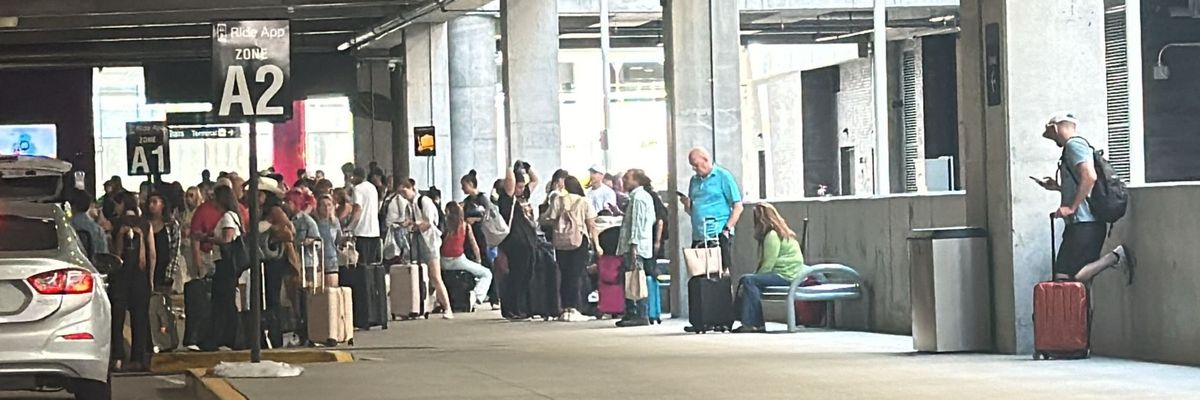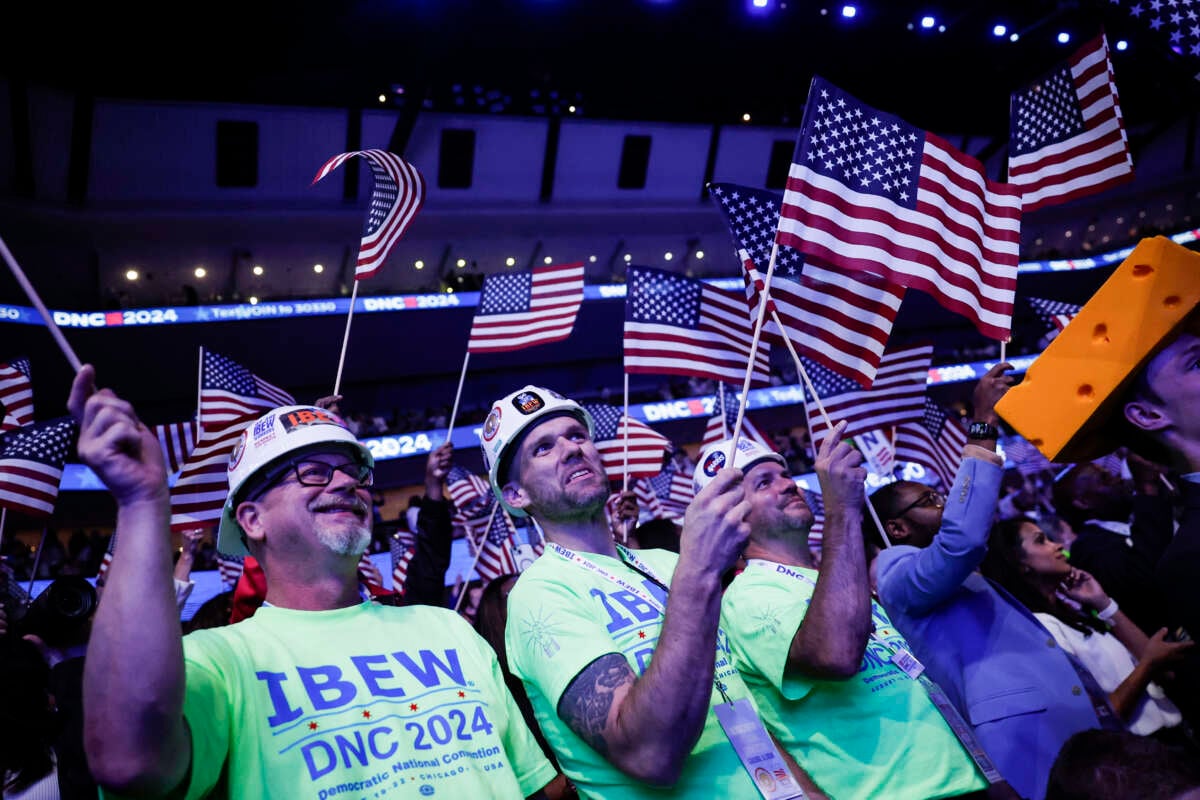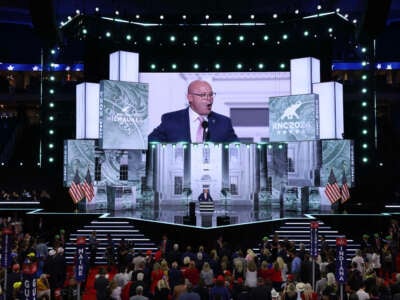"This is something we're doing for all of us," said a Tennessee Drivers Union co-president.

Drivers with Lyft and Uber held a strike at Nashville International Airport in Tennessee on August 30, 2024, the start of Labor Day weekend.
(Photo: Tennessee Drivers Union/X)
Jessica Corbett
Aug 30, 2024
COMMON DREAMS
Drivers for the ride-hailing companies Lyft and Uber are demanding better pay and work conditions by beginning Labor Day weekend with a Friday strike at Nashville International Airport.
"The Tennessee Drivers Union (TDU) has strategically chosen Labor Day weekend to stage its strike," the group said in a statement. "The weekend, which draws thousands of visitors to Nashville's music, entertainment, and tourist venues, highlights the $31 billion industry that relies heavily on the labor of ride-share drivers to generate profits."
In addition to the airport strike, which began at 1:00 pm and was set to continue until at least 7:00 pm, the drivers planned to "lead a caravan through Broadway in downtown Nashville, the center of Tennessee's country music tourism industry."
WPLNreported that "at one point, the airport shut down access to the ride-share lot and refused to allow more drivers to enter and join the strike on Friday."
TDU co-president Kovan said that "this is something we're doing for all of us, not for a single individual, whether you are Uber Black, a regular Uber, or a taxi driver," and "this is gonna be the beginning of a nightmare" for the companies.
The union is calling for meetings with Nashville Mayor Freddie O'Connell and the Metropolitan Council, the Metropolitan Nashville Airport Authority, and the Transportation Licensing Commission to go over demands, based on surveying hundreds of drivers.
The workers said they want an expansion of their airport lot as soon as possible and clean, working bathrooms on-site, a 9:00 pm cutoff for scooters in the city, a cap on the number of ride-share drivers in the area, enforcement of the prohibition on fake taxis, and a "dignified" wage.
Drivers for the ride-hailing companies Lyft and Uber are demanding better pay and work conditions by beginning Labor Day weekend with a Friday strike at Nashville International Airport.
"The Tennessee Drivers Union (TDU) has strategically chosen Labor Day weekend to stage its strike," the group said in a statement. "The weekend, which draws thousands of visitors to Nashville's music, entertainment, and tourist venues, highlights the $31 billion industry that relies heavily on the labor of ride-share drivers to generate profits."
In addition to the airport strike, which began at 1:00 pm and was set to continue until at least 7:00 pm, the drivers planned to "lead a caravan through Broadway in downtown Nashville, the center of Tennessee's country music tourism industry."
WPLNreported that "at one point, the airport shut down access to the ride-share lot and refused to allow more drivers to enter and join the strike on Friday."TDU co-president Kovan said that "this is something we're doing for all of us, not for a single individual, whether you are Uber Black, a regular Uber, or a taxi driver," and "this is gonna be the beginning of a nightmare" for the companies.
The union is calling for meetings with Nashville Mayor Freddie O'Connell and the Metropolitan Council, the Metropolitan Nashville Airport Authority, and the Transportation Licensing Commission to go over demands, based on surveying hundreds of drivers.
The workers said they want an expansion of their airport lot as soon as possible and clean, working bathrooms on-site, a 9:00 pm cutoff for scooters in the city, a cap on the number of ride-share drivers in the area, enforcement of the prohibition on fake taxis, and a "dignified" wage.
Citing delays in waiting for fares, receiving tickets without warnings, and inadequate airport bathrooms, the driver said, "That's why we came together."
"With the current economic situation, it is really difficult to meet family needs or what you need to survive. We're trying to fight for our rights," he explained. "We also don't want passengers to be overcharged by Uber. When they take over 50% or 60% of the ride fare, they are counting on us getting tips from riders, but the way we are struggling we understand people are struggling, so not everyone tips."
While Lyft and Uber drivers in Nashville joined delivery service workers for Amazon Flex, DoorDash, Grubhub, Instacart, Postmates, and other companies in a strike on May 1, or International Workers' Day, TDU said Friday that "this ride-share organizing effort is the first of its size to occur in the Deep South, in an explicitly anti-worker state."
A report released last month by the Economic Policy Institute (EPI) details how "for at least the last 40 years, pay and job quality for workers across the South has been inferior compared to other regions—thanks to the racist and anti-worker Southern economic development model."
"In addition to right-to-work laws and the overall opposition from political leaders across the region, workers seeking to organize a union typically face intense opposition from employers," the EPI report says. "Further, because of the political opposition to unions, when workers try to organize, employers know that they can illegally intimidate them, refuse to recognize the union, or negotiate a contract in bad faith—with little to no fear of being held accountable by political leaders."
The Volkswagen employees ultimately voted to join the UAW. The EPI report emphasizes that "workers must be able to come together in a union to demand fair wages and benefits, a safe working environment, and the ability to have a say about their workplace—even when politicians are intransigent."
TDU co-president Arkangelo on Friday also stressed how important it is to "always stand in solidarity with one another," saying that "if we don't come together as people striving for their rights then we will continue to suffer and [be] robbed by two giants, Uber and Lyft."








